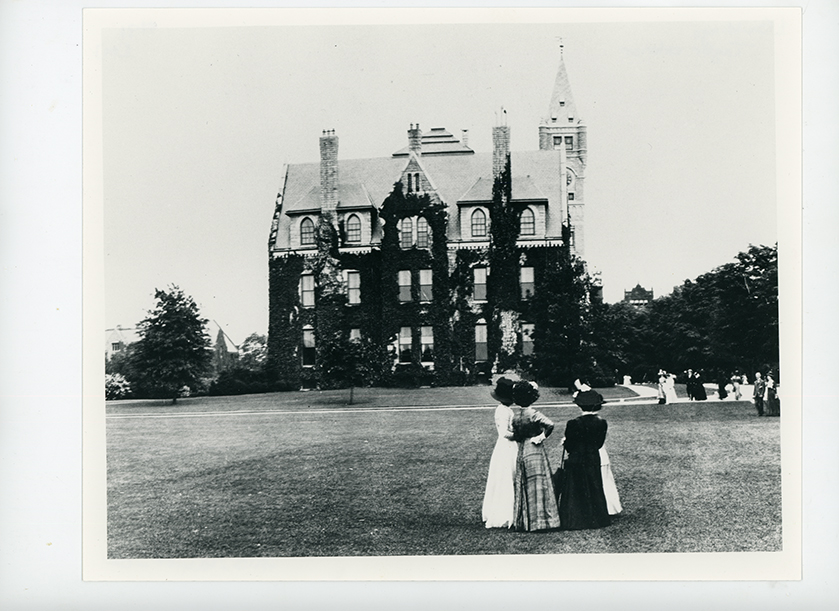The Imagined Bryn Mawr
Although Joseph W. Taylor founded Bryn Mawr for Orthodox Quaker women, it never served the Society of Friends exclusively, or even primarily. Recognizing that Haverford already employed the majority of accomplished Quaker academics, the Board of Trustees decided not to restrict faculty appointments to Quakers, thereby eliminating the possibility that Bryn Mawr would be equipped to offer a truly guarded education. They also recognized that the number of Quaker women qualified to meet Bryn Mawr’s ambitious entrance exam would be small. Indeed, only 6% of the first graduating class identified as Quaker.

The ideal Bryn Mawr student envisioned by the founders could never be fully realized in a single person. The cult of true womanhood, shared across nineteenth-century American society, upheld impossible standards for all women. By the time Bryn Mawr opened its doors, those pressures were compounded by unprecedented expectations for academic excellence. Women who lacked economic and social advantage were unlikely to compete for entrance to Bryn Mawr, as were women of ethnic, racial, and religious backgrounds considered unrefined or uncivilized by the College’s gatekeepers.
The first students of Bryn Mawr did possess some socio-economic diversity, but scholarship support was initially limited to advanced graduate students and Quaker undergraduates. Without question, Bryn Mawr’s foundations supported a structure that failed to provide access to all women, supporting a nineteenth-century American status quo of middle- and upper-class white femininity .
Did Bryn Mawr’s founders realize their visions for the school and its students? How should their success be measured today?
